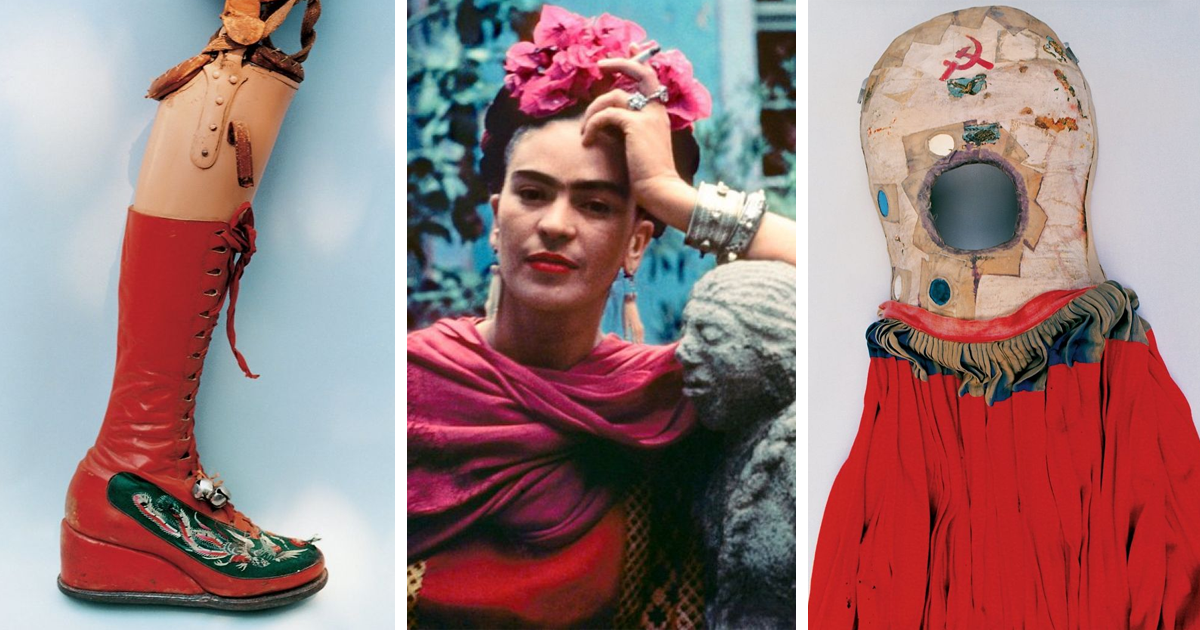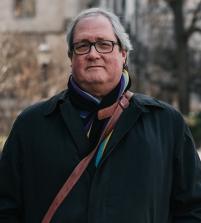The Epistemology of Frida's Closet
Frida Kahlo is once again the subject of a major exhibition.
 Frida Kahlo is once again the subject of a major exhibition. Following shows at the Museo de Frida Kahlo (a.k.a., her home, La Casa Azul) in 2012 and then last fall at the Victoria and Albert in London, “Frida Kahlo: Appearances Can Be Deceiving” is now at the Brooklyn Museum in New York City. The exhibitions are connected because each takes its inspiration from the 2003 “discovery” in the bathroom at La Casa Azul of a major cache of Frida’s clothing, corsets, and jewelry. The two more recent exhibitions dress up the new material in various ways via local collections and (the scholar’s frequent recourse) the subtitle: in London, Frida’s self-construction through clothing and cosmetics (“Making Her Self Up”) aims to accentuate the degree to which her person and her art alike served as a mirror for her viewers; in Brooklyn, the way that Frida worked assiduously to manipulate the angle of a camera’s lens and the fold of a skirt to mask her physical pain (“Appearances Can Be Deceiving”).
Frida Kahlo is once again the subject of a major exhibition. Following shows at the Museo de Frida Kahlo (a.k.a., her home, La Casa Azul) in 2012 and then last fall at the Victoria and Albert in London, “Frida Kahlo: Appearances Can Be Deceiving” is now at the Brooklyn Museum in New York City. The exhibitions are connected because each takes its inspiration from the 2003 “discovery” in the bathroom at La Casa Azul of a major cache of Frida’s clothing, corsets, and jewelry. The two more recent exhibitions dress up the new material in various ways via local collections and (the scholar’s frequent recourse) the subtitle: in London, Frida’s self-construction through clothing and cosmetics (“Making Her Self Up”) aims to accentuate the degree to which her person and her art alike served as a mirror for her viewers; in Brooklyn, the way that Frida worked assiduously to manipulate the angle of a camera’s lens and the fold of a skirt to mask her physical pain (“Appearances Can Be Deceiving”).
These variations cannot but strike the scholar of religion as an exercise akin to that of what Albert Schweitzer, just over a century ago, termed “the quest for the historical Jesus.” These quests for the historical Frida, spurred by new artifactual discoveries, present her in ways that reflect the self-images of the exhibitors, or at least invite the audience to discover in Frida a kind of identification with themselves. In London, this is more explicitly thematized and even interrogated; in Brooklyn, it is achieved through contextualizations, both of pre-Columbian artifacts in the museum’s permanent collection and the decision to present bilingual wall texts and labels. And, of course, both exhibits participate in “Fridamania,” the current (and remunerative) fascination and identification with Kahlo’s person.
What both exhibits also do—indeed cannot help but do—is afford the viewer a more visceral sense than we have had of the quite striking juxtaposition of Kahlo’s carefully orchestrated appearances with her ongoing experiences of excruciating pain. As is well known, Kahlo was stricken with polio at the age of six and emerged from it with a shortened leg; at the age of eighteen, she was involved in a horrific streetcar accident in which a metal railing was driven through the middle of her body, wreaking havoc with her internal organs in ways that made it impossible for her to bear children and required recurrent adaptive surgeries. Prior to these shows, our understanding of this utterly central fact of her life came chiefly through testimony from eyewitnesses, selected photographs, and occasional signals in her art, which intimated ongoing, significant pain.
Here, however, are unmistakable details: the bulky (surely heavy and sweaty) corsets that Kahlo had to wear to alleviate excruciating pressure on her spine; prosthetics for a leg that eventually required amputation; and a carefully cultivated wardrobe of elaborate blouses, shawls, and skirts that marry bold style with a capacity to give appealing form to a ravaged body and its accompanying apparatus. Many of the most striking pieces from the wardrobe are from Tehuantepec and have always been understood to index Frida’s fascination with, and championing of, native Mexican aesthetics. Without calling that fascination into question, these shows testify to another, perhaps more immediately necessary, utility.
These images cannot but strike the scholar of literature as an exercise in what Eve Kosofsky Sedgwick, approximately a hundred years after Schweitzer, helpfully termed “the epistemology of the closet.” The epistemology of Frida’s closet has as its metonymy in the Brooklyn exhibition a prosthetic leg brandished with a hammer and sickle. This presents Frida as only she knew herself: propped up artificially, enabled to appear as she wished, the aspirant mother of a modern Mexico in which the principles of Marxist/Leninist revolution would displace centuries of despotism and colonialization. One is closer to the public Kahlo if one recognizes that the signatures of Fridamania—the unibrow, the wardrobe, the cross-dressing and bisexuality—obscure the incipient pain and suffering that served (to a greater degree than her husband and many lovers) as the constant companions of her daily experience.
In this respect, it is an unfortunate if understandable consequence that an exhibit of some 350 items includes relatively little of Frida Kahlo’s art—where she did not obscure her pain and suffering but gave it expressive and enduring form. The Brooklyn exhibit partly compensates for this by displaying about a dozen of the thousands of retablos that Frida collected and displayed on the walls of La Casa Azul. Inspired by church art, particularly on altars in Catholic Spain, retablo (also known as ex-votos) emerged in late nineteenth-century Mexico as small paintings on cheap metal (usually aluminum) that depicted what the painter regarded as a decisive moment in her or his life. The moment is always particular and local, but the short handwritten descriptions below the paintings have as their counterpart above depictions of the relevant saint or member of the Holy Trinity who is invoked as intercessor.
Kahlo’s engagement with retablo was not only as an avid collector. She was herself depicted in a retablo commissioned by her parents at the time of her streetcar accident. And not incidentally, she transformed the genre in her own work, deploying retablo throughout her career in ways that are readily construable as a form of autobiography. Less remarked on than her more generically titled series of “self-portraits,” paintings such as “Mi Nacimiento” (1936), “Self-Portrait with Cropped Hair” (1940), and “Self-Portrait with the Portrait of Dr. Farilli” (1948) merge the historical Frida with the epistemology of her closet: we see her circumstances and we see something of what is inside those circumstances. In these pictures Frida is indeed making herself up; but appearances in no way deceive.
Kahlo’s life, in its overt forms of self-presentation, inadvertently but inexorably planted the seeds at once for Fridamania and for our own witness to a heroic and at times profound instance of the use of personal pain and suffering in the service of art that transcends it. The exhibit in Brooklyn, intentionally or not, presents its viewer with the uneasy, discomfiting alliance of “branding” with myth. Those who view here must change—but will they hold in mind and memory Frida’s real memento mori if they stop at the gift shop for some talisman of it?
Image: Images from Frida by Ishiuchi Miyako (2013), a photographic collection of Mexican artist Frida Kahlo's wardrobe and belongings.


